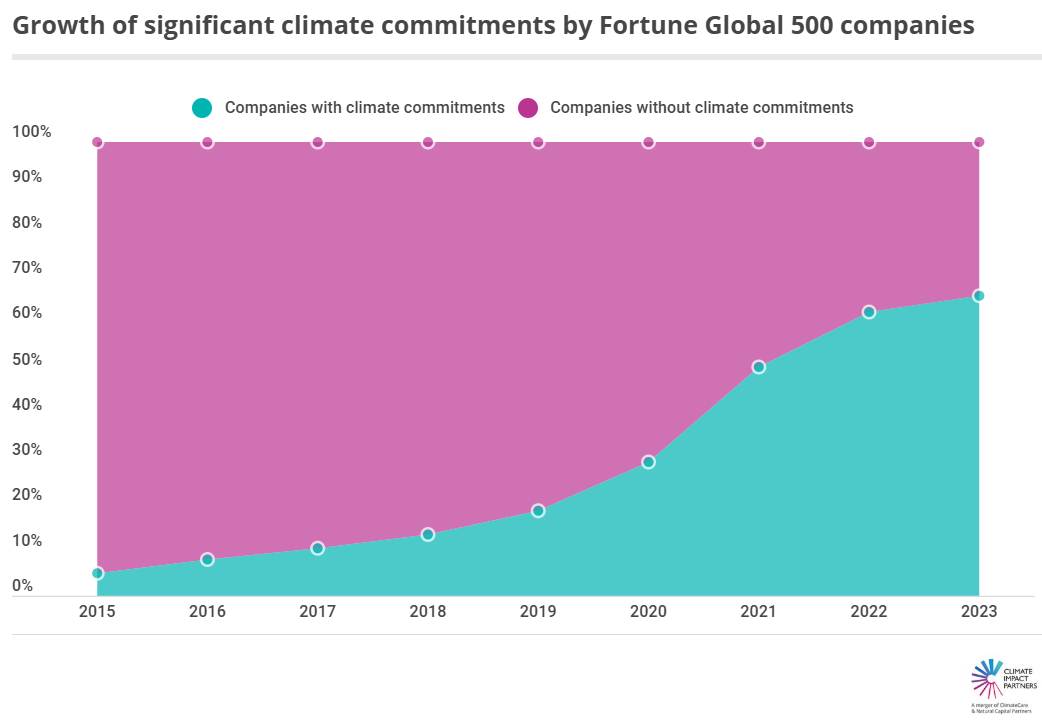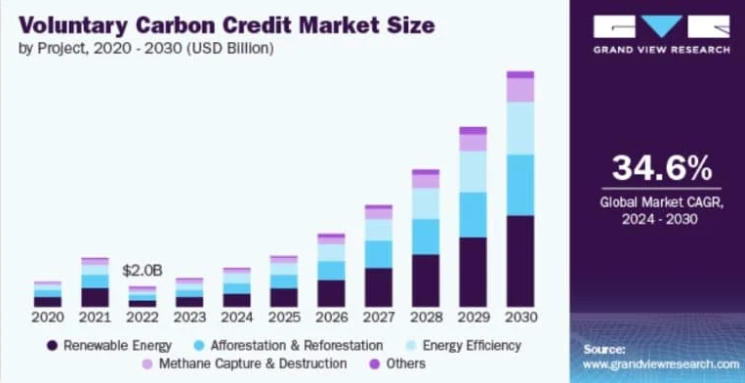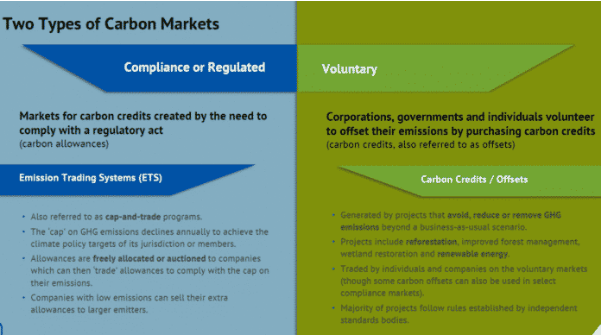What are Carbon Credits?
Carbon credits are a policy first established by the Kyoto Protocols in 1997 [1], allowing governments to issue credits granting permission to produce carbon, equating to one tonne of CO2 emissions per credit. The idea behind this was that by having companies purchasing carbon credits, the revenues would be invested in carbon-negating programmes leading to a net reduction of emission, alongside incentivising corporations to reduce their emissions to reduce expenditure from purchasing carbon credits.
In addition, the number of credits issued per year would decrease, gradually reducing emissions via pressure from this programme, with the current markets for carbon credits encompassing 23% of global emissions [1].

Source, Climate Impact Partners [2]

Source, Abatable [3]
The Carbon Market
Surplus of carbon credits leads to an additional market for these, with companies possessing an excess of credits compared to their emissions in turn making profit from selling these to groups operating in excess, resulting in ‘carbon companies’ whose business model centres on the selling of carbon credits to offending polluters. This leads to a market of ‘carbon offsetting’, which will be further talked about.
For example, groups such as Tesla in 2023 made a profit of $1.78 billion through the sale of carbon credits, due to the heavy investments in renewable technologies [1].
What are Carbon Offsets?
This in turn results in carbon offsetting, a market formed between companies looking to further offset their emissions through investment in green and renewable projects, which involve schemes like forest conservation, clean cooking and renewable energy developments. Organisations such as Climate Impact Partners and Verra act as regulators for trades like this, whilst also operating inside the market providing carbon offsets simultaneously, which they then sell on the carbon market to heavy polluter groups.
As of 2024, the global market for carbon credits and offsets reach to $1.5 trillion, representing 15.7Gt of CO2 emissions globally, with projected growth over the decade as demand for reduced emissions increases [1].

Source, Carbon Credits [1]

Source, Carbon Credits [1]
Who participates in the Carbon Market?
The carbon market is a trade-off set between three groups: Government and international organisations which issue the carbon credits, the polluter companies which purchase excess credits and the offset companies that sell excess credits and provide investment opportunities to offset carbon emissions.
From this balance, the aim is to allow these companies to profit and prosper whilst also developing green and renewable projects to ensure long-term carbon emission reductions. An example of this is Brookfield Renewable Partners, who have been establishing several hydroelectric and wind initiatives which are financed by corporations looking to establish some emission reductions.

Get in Touch with Us!
We’d love to hear from you. Whether you have feedback, suggestions, or want to share insights related to sustainability and environmental truth, your voice matters. At Earth Athenaeum, we believe in open dialogue and collaboration to uncover and explore the realities behind green initiatives and corporate claims.
If you have questions, ideas, or simply want to connect, feel free to reach out — we’re here to engage, listen, and learn together.
Reference List And Further Reading
[1] – carbon credits. The Ultimate Guide to Understanding Carbon Credits [Internet]. Carbon Credits. 2022. Available from: https://carboncredits.com/the-ultimate-guide-to-understanding-carbon-credits/
[2] – Carbon Credits Explained [Internet]. www.climateimpact.com. Available from: https://www.climateimpact.com/services-projects/carbon-credits-explained-what-they-are-and-how-they-work/
[3] – Abatable. Carbon Credits Prices by Project Type · Sep 2022 · Abatable [Internet]. Abatable. 2022. Available from: https://abatable.com/blog/carbon-credits-pricing/
[4] – Starr H. The Problem with Carbon Credits and Offsets Explained [Internet]. The Australia Institute. 2023. Available from: https://australiainstitute.org.au/post/carbon-credits-and-offsets-explained/
[5] – Temple LS. The Climate Solution Actually Adding Millions of Tons of CO2 Into the Atmosphere [Internet]. ProPublica. Available from: https://www.propublica.org/article/the-climate-solution-actually-adding-millions-of-tons-of-co2-into-the-atmosphere
[6] – UNFCCC. What is REDD+? [Internet]. United Nations Climate Change. 2024. Available from: https://unfccc.int/topics/land-use/workstreams/redd/what-is-redd
[7] – ICAO. Carbon Offsetting and Reduction Scheme for International Aviation (CORSIA) [Internet]. ICAO. 2019. Available from: https://www.icao.int/environmental-protection/CORSIA/Pages/default.aspx
[8] – H S. Who Verifies Carbon Credits? [Internet]. Carbon Credits. 2021. Available from: https://carboncredits.com/who-verifies-carbon-credits/
